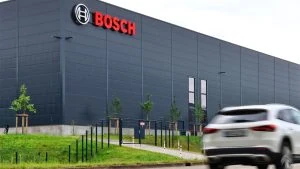In recent years, complex international supply chains and disrupted trade flows have repeatedly presented the economy with serious challenges.
Many companies have been in crisis mode, especially since 2020: a global pandemic, the Ever Given accident in the Suez Canal, war on the European continent, increasing trade tensions between the US and China – these and other events have shown how sensitive supply chains are and what can happen if they are interrupted. Unpredictable situations require new solutions that do not yet exist in order for companies to remain successful in the market. Statistical forecasting – i.e. deriving predictions from the past – is no longer an effective way of aligning supply and demand with corporate strategy.
We already live in a highly digitized world. So why do unexpected situations still represent such a disruptive factor? The digital solutions that are used today are often too rigid and lack the experience to be able to react in an agile manner to situations that have never occurred before. Coordination between many departments on the process for further planning often remains essential. In recent decades, companies have massively increased their investments in digital assets, but productivity has not increased. Investment strategies therefore need to be reconsidered – the future requires corporate management that redefines added value within the value chain.
Linking people and processes
The modern company is an interplay between people, data, assets and technologies. The larger the company, the more difficult it is to coordinate them all. New product launches, marketing campaigns, production planning in consideration of maintenance intervals – the optimization of sales and production processes encompasses many company segments. Complex and difficult-to-understand processes are sand in the gears of a company.
Particularly in the area of business planning, it is challenging to draw measurable values and results from complex interactions. It is essential that the relevant employees have such results available for their decisions. To achieve this, all departments must be linked: Product management, sales, suppliers, production, marketing, finance and company management. They all use a variety of tools, so coordinative support is required, for example in the form of artificial intelligence. At the same time, the measures taken must always remain traceable.
The Missing Link: Sales & Operations Planning
A link is needed to untangle this web of relationships and provide employees with a reliable basis for decision-making. This link must make it possible to optimally coordinate supply and demand – in an agile manner. This is where Sales & Operations Planning (S&OP) comes into play.
S&OP is an advanced strategic business process that aligns sales forecasts with operational plans to ensure effective resource allocation to achieve business goals. This approach can leverage the power of AI to improve forecasting accuracy, optimize decision-making processes and promote cross-functional collaboration.
Technological solutions in the area of S&OP, such as a data fabric, create a layer between the individual company divisions and the basis of tools and databases. They cover the entire spectrum of business applications – from product reviews to executive meetings.
Many steps for an S&OP – few for employees
The following three application examples illustrate how an S&OP works in practice:
➤ The Product Management department is planning a new product release. The corresponding planning tool informs the sales, marketing and warehouse teams to sell off the stock of the current product version in order to minimize the capital tied up in old stock that is more difficult to sell.
➤ The marketing department is preparing a major advertising campaign. Here too, the planning tool provides the sales, supply chain, logistics and production teams with the relevant information in advance so that they can react optimally to the anticipated peak in demand.
➤ A supplier reports delivery problems. The tasks are delegated to the relevant departments via a corresponding application in the planning tool so that they can make decisions about whether an alternative supplier or a faster and more cost-intensive transport route is the better choice for the next steps.
Depending on their position in the system, employees receive individually relevant insights. The S&OP process application not only aggregates data, but also introduces new and customized logics through the implementation of AI. This process enables the generation of inventory, sales, logistics analyses and other status reports of all relevant processes and keeps all relevant stakeholders informed.
The next step is to create forecasts based on the collected data. They are not static, but are regularly reviewed and adjusted dynamically to take account of spontaneous changes in the market or in demand. This enables every user to obtain a smart and holistic overview of all information relevant to the respective process with minimal effort and simplifies the usually difficult coordination between parts of the company.
Integrated into an end-to-end process automation platform, such as the Appian platform, this enables the entire process chain in the company to be carried out for efficient S&OP. The interaction between humans and AI is key here. For example, a demand planner receives a warning from the AI about an anomaly in the forecast. However, the decision-making authority remains with the human – who can adjust the forecast manually if necessary.
S&OP is an advanced, strategic business process that aligns sales forecasts with operational plans to ensure effective resource allocation.
Fabian Czicholl, Appian
Advantages of combining S&OP and AI
The integration of AI into the Sales & Operations planning process offers numerous advantages. First of all, it enables significantly improved forecasting accuracy. AI algorithms can analyze large amounts of data and recognize patterns that are often invisible to human planners. This leads to more accurate predictions of customer demand and enables more effective inventory planning. Companies can thus optimize their stock levels, which leads to a reduction in tied-up capital and an improvement in liquidity.
Another advantage of S&OP with AI is the possibility of scenario planning and analysis. AI-supported systems can run through various “what-if” scenarios and simulate their impact on the entire supply chain. This approach enables companies to be better prepared for any type of eventuality and to react more flexibly to market changes. The ability to react quickly and soundly to changes can be a decisive competitive advantage.
It also ensures that all areas of the company are kept informed and that the relevant information for necessary decisions is provided to the organizational units via task coordination.
Simplify collaboration, increase transparency
Implementing technological solutions with AI for S&OP also leads to improved cross-functional collaboration. Traditionally, different departments such as sales, production and finance often work in silos, which can lead to inefficiencies and poor planning. AI-powered systems promote collaboration by creating a unified database and automating processes. This enables better coordination between departments and leads to coherent planning decisions.
In addition, the technological solutions with AI in the area of S&OP help to create increased transparency and visibility throughout the supply chain. Modern process automation platforms allow stakeholders to view the current status of various planning and operational issues, including responsibilities and expected resolution timelines. This transparency promotes accountability and enables faster problem resolution.
Another important aspect is the possibility of automated exception handling and problem solving. AI systems can quickly recognize deviations from the plan and initiate appropriate measures. This can range from automatically adjusting production schedules to notifying relevant decision makers. This ability to proactively solve problems minimizes interruptions and improves the overall efficiency of the S&OP process.
Process excellence through AI-supported S&OP
The impact of an effective S&OP process with AI on business performance is significant. Research shows that companies with a well-implemented S&OP process gain one or two additional percentage points in EBIT compared to companies that do not. Likewise, their freight costs and capital intensity are 10 to 15 percent lower and they have 40 to 50 percent fewer penalties and lost sales to their customers. They can also increase the productivity of their planners by 10 to 20 percent.
All this potential is literally crying out for the implementation of an S&OP. Until now, practical implementation has often been limited by complex data connections via third-party systems and technical limitations in the mapping of process variations. An S&OP supported by AI technology finally makes it possible to tackle this complex problem and helps to achieve great efficiencies. It enables more accurate forecasting, improved cross-functional collaboration, increased agility and, ultimately, improved business performance.
In an increasingly complex and volatile business world, this is becoming a critical factor for business success and competitiveness. With a partner like Appian, process excellence can be achieved to remain successful in a constantly changing and evolving business world.







